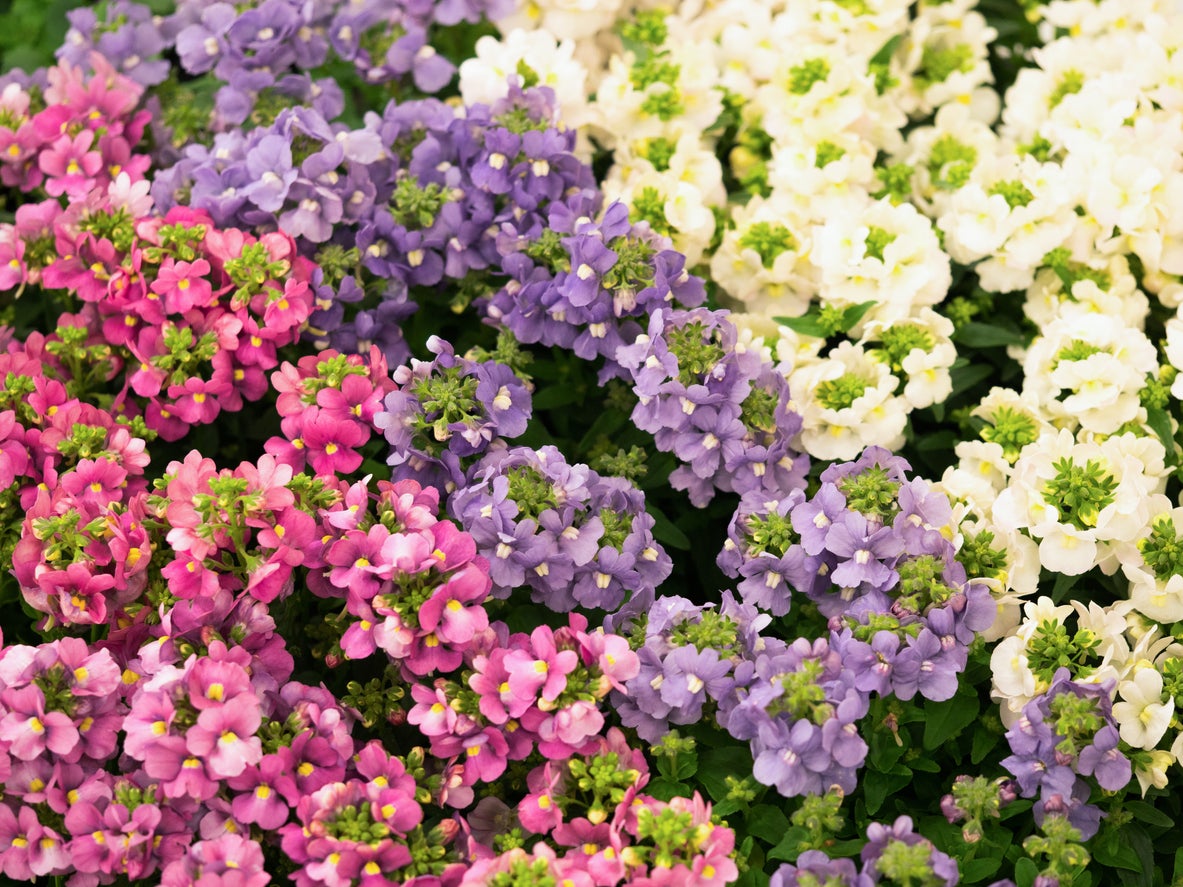Nemesia Plant Types – Growing Different Varieties Of Nemesia Flowers


Nemesia flowers grow as small, showy bedding plants. Although they are a perennial specimen, most people grow them as annual flowers, except in the warmest zones. Nemesias add colorful swaths of breathtaking, low growing flowers in late spring as groundcovers or edging in bigger beds.
Different Kinds of Nemesia
Nemesia blossoms with half-inch (1 cm.) flowers in colors such as pink, purple, blue, and white. Some plants reach up to 2 feet (61 cm.) tall and spread to a foot (31 cm.) while many are no taller than 6 to 12 inches (15-31 cm.). Their diminutive size makes blooms appear larger, and they are often so dense that foliage is nearly hidden.
Older nemesia plant types bloom into summer, when they may balk at extreme heat. An overall pruning at this time can encourage an entire new flush of blooms lasting until frost. Newly created varieties of nemesia expand your choices of color even more, some with bi-color blooms.
New and different kinds of nemesia are more heat tolerant and have a pleasant fragrance. Some have those hard-to-find blue flowers. Here are some new types to look for:
- Berries and Cream – Blue and white flowers
- Blueberry Ripple – Deep purple flower
- Lilacberry Ripple – Purple to violet blooms
- Strawberry Ripple – Red to strawberry pink blossoms
- Aromatica True Blue – Fragrant, soft blue flowers
- Lemon Mist – Purple and white flowers edged in yellow
- Sunsatia Pear – White flowers splashed with orange and frost tolerant
Planting Nemesia Flowers
Best flowering on nemesia comes from those planted in full sun, but when temperatures reach the 70’s (21 C.), blooming may slow or cease entirely. Newer varieties claim to have overcome this issue to some degree. When possible, plant these beauties in a morning sun spot with afternoon shade. Areas that get filtered sun, such as that peeking through the leaves of a taller shrub or flowers, can help provide this beneficial shade.
Grow nemesia from seed, if you can find them, or check at your local garden center or nursery early in the season. Some gardeners suggest you plant nemesia varieties along with pansies. Avoid disturbing the roots when planting, lightly spread them out and get them planted into rich soil.
If you’ve not recently amended the soil where you’ll be planting nemesia, do so before putting them in the ground. These plants need well-draining soil that doesn’t hold water as they are prone to stem rot when too wet. An attractive layer of organic mulch helps conserve moisture as it decomposes to enrich the soil.
Sign up for the Gardening Know How newsletter today and receive a free copy of our e-book "How to Grow Delicious Tomatoes".
Nemesia is a great plant for a container as well.

Becca Badgett was a regular contributor to Gardening Know How for ten years. Co-author of the book How to Grow an EMERGENCY Garden, Becca specializes in succulent and cactus gardening.